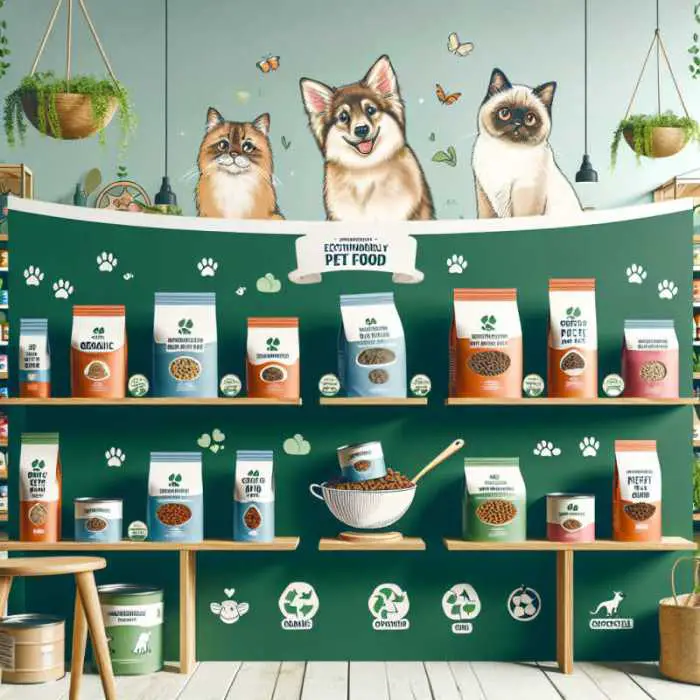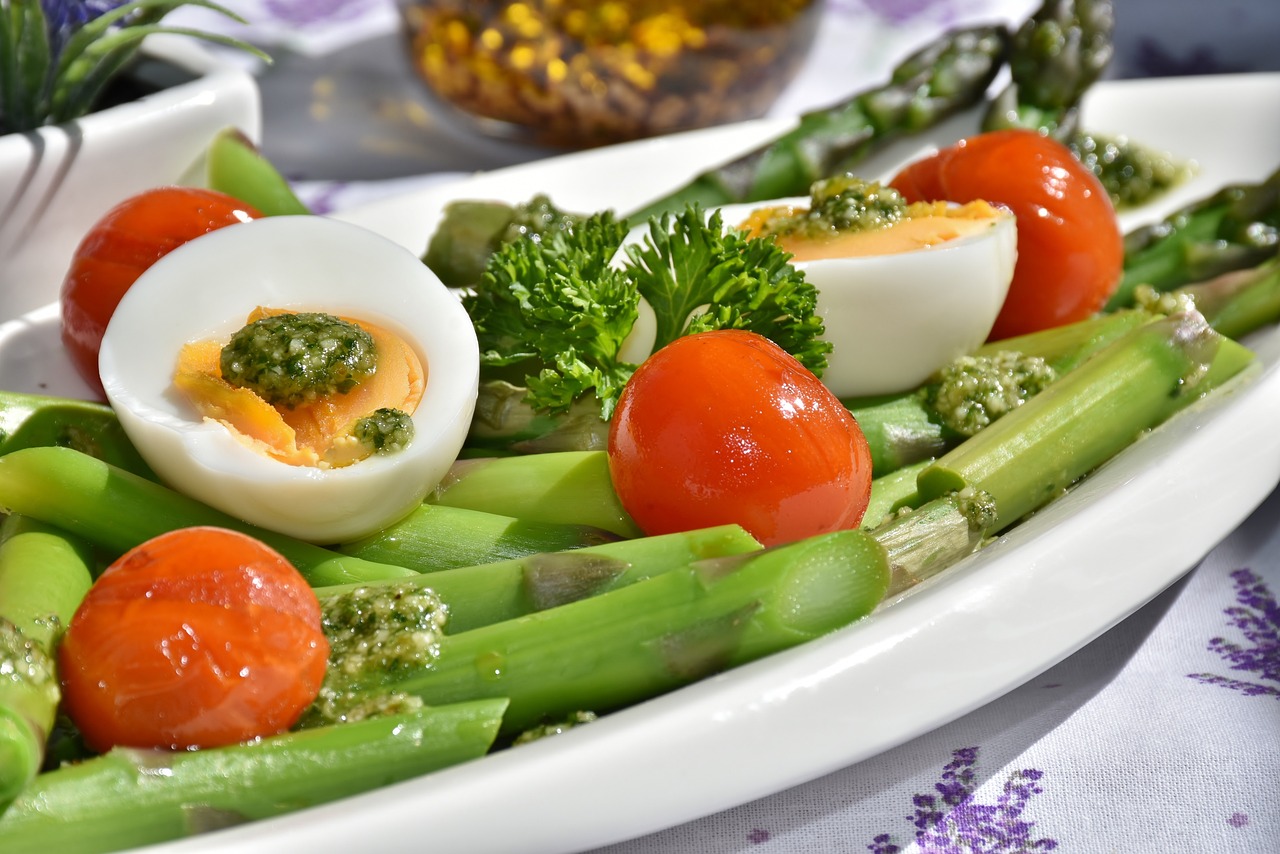
Pet food in display.
Is your pet’s food harming the planet? It’s a question that many eco-conscious pet parents are beginning to ask as they become more aware of the environmental impact of traditional pet food.
From the significant carbon footprint of conventional production methods to the extensive use of water and land resources, the environmental toll is staggering.
Meat production, a staple in most pet foods, is particularly detrimental, contributing to deforestation and greenhouse gas emissions.
Add to this the waste generated from packaging and transportation, and it’s clear that our furry friends’ diets are far from green.
However, there are sustainable alternatives that not only benefit the environment but also offer health advantages for pets and align with ethical considerations like animal welfare.
This article delves into the environmental costs of traditional pet food, the benefits of sustainable options, key eco-friendly ingredients, and practical steps for transitioning your pet to a greener diet.
We’ll also share DIY recipes and highlight top sustainable brands, ensuring you have all the information needed to make an informed, eco-friendly choice for your beloved pets.
Understanding the Environmental Impact of Traditional Pet Food
When it comes to the carbon footprint of conventional pet food production, the numbers are staggering.
The process of producing traditional pet food involves significant resource consumption, including vast amounts of water and land.
This isn’t just about the ingredients themselves; it’s about the entire supply chain, from farming to processing to transportation.
For instance, the meat production required for pet food is a major contributor to greenhouse gas emissions, which accelerates climate change.
Consider this: producing just one kilogram of beef can require up to 15,000 liters of water. Now, multiply that by the millions of pets around the world, and you start to see the scale of the issue.
Additionally, the land used for raising livestock could be utilized for more sustainable purposes, such as growing crops for human consumption or reforestation efforts.
Let’s not forget about the waste generated from packaging and transportation. Traditional pet food often comes in non-recyclable packaging, contributing to the growing problem of plastic pollution.
The transportation of these products also adds to their overall environmental impact, with fossil fuels being burned to move goods from factories to stores.
- Carbon Footprint: High due to meat production and transportation.
- Resource Use: Significant water and land consumption.
- Waste Generation: Non-recyclable packaging and transportation emissions.
To put things into perspective, here’s a comparison of the environmental impact of traditional pet food versus sustainable options:
| Aspect | Traditional Pet Food | Sustainable Options |
|---|---|---|
| Carbon Footprint | High | Low |
| Water Usage | Extensive | Minimal |
| Land Usage | High | Low |
| Packaging Waste | Non-recyclable | Eco-friendly |
By understanding these impacts, pet parents can make more informed choices that not only benefit their pets but also the planet.
Switching to sustainable pet food options can significantly reduce your pet’s environmental footprint, making a positive difference in the world.
Benefits of Choosing Sustainable Pet Food
Opting for sustainable pet food is not just a trend; it’s a responsible choice that has a multitude of benefits. Firstly, the positive effects on the environment are undeniable.
By choosing eco-friendly options, you’re reducing the carbon footprint associated with traditional pet food production. Brands like Yora and Edgard & Cooper use insect protein and sustainably sourced ingredients, which significantly lower greenhouse gas emissions.
This means fewer resources are consumed, and less waste is produced, making it a win-win for the planet.
But it’s not just the environment that benefits. There are also significant health benefits for pets. Sustainable pet foods often contain higher quality, natural ingredients that are free from harmful additives and preservatives.
This can lead to better digestion, shinier coats, and overall improved health for your furry friends. For instance, Open Farm offers products that are not only sustainably sourced but also packed with nutrients that support pet health.
Ethical considerations are another crucial factor. Many sustainable pet food brands prioritize animal welfare, ensuring that the ingredients are sourced humanely.
This means no factory farming or unethical treatment of animals. Brands like The Honest Kitchen and Wild Earth are leading the way in this regard, offering products that are both ethical and nutritious.
- Reduces carbon footprint
- Improves pet health
- Supports ethical animal treatment
- Uses high-quality, natural ingredients
Choosing sustainable pet food is a decision that benefits not only your pet but also the planet and other animals. It’s a holistic approach that addresses environmental, health, and ethical concerns, making it the best choice for conscientious pet parents.
Key Ingredients to Look for in Eco-Friendly Pet Food
When it comes to choosing eco-friendly pet food, it’s crucial to focus on the right ingredients. Sustainable options like insect protein, plant-based proteins, and organic produce are not only better for the environment but also offer excellent nutritional benefits for your pets.
These ingredients require fewer resources to produce, resulting in a smaller carbon footprint and less strain on natural ecosystems.
Here are some top sustainable ingredients to consider:
- Insect Protein: High in protein and amino acids, insect protein is a sustainable alternative to traditional meat sources. Brands like Yora and Jiminy’s are leading the way in incorporating insect protein into their pet food products.
- Plant-Based Proteins: Ingredients like lentils, chickpeas, and quinoa offer a rich source of protein without the environmental impact of meat production. Companies such as V-Dog and Wild Earth specialize in plant-based pet foods.
- Organic Produce: Organic fruits and vegetables are grown without harmful pesticides and fertilizers, making them a healthier choice for your pet and the planet. Look for brands like The Honest Kitchen and Castor & Pollux that prioritize organic ingredients.
To give you a clearer picture, here’s a comparison of the nutritional value of sustainable ingredients versus traditional ones:
| Ingredient | Protein Content | Environmental Impact |
|---|---|---|
| Insect Protein | High | Low |
| Plant-Based Proteins | Moderate to High | Low |
| Traditional Meat | High | High |
| Conventional Vegetables | Low | Moderate |
By opting for these sustainable ingredients, you not only provide your pet with nutritious food but also contribute to a healthier planet. So, the next time you’re shopping for pet food, keep an eye out for these eco-friendly options.
How to Transition Your Pet to Sustainable Food
Switching your pet to sustainable food can be a game-changer, but it’s crucial to do it right to avoid any digestive issues. Here’s a step-by-step guide to help you make the transition smoothly:
- Start Slowly: Begin by mixing a small amount of the new eco-friendly pet food with your pet’s current food. Gradually increase the proportion of the new food over a week or two.
- Monitor Health: Keep a close eye on your pet’s health during the transition. Look out for any signs of digestive upset, such as vomiting or diarrhea. If you notice any issues, slow down the transition process.
- Mixing Tips: To make the transition easier, try mixing the old and new food thoroughly. This helps your pet get used to the new taste and texture without a sudden change.
- Transition Timeline: A typical transition should take about 7-10 days. Start with 25% new food and 75% old food for the first few days, then move to a 50/50 mix, followed by 75% new food and 25% old food, and finally, 100% new food.
By following these steps, you can ensure a smooth transition to sustainable pet food while keeping your pet healthy and happy. Remember, patience is key, and every pet is different, so adjust the timeline as needed.
DIY Sustainable Pet Food Recipes
Ready to take your pet’s diet to the next level? Let’s dive into some DIY sustainable pet food recipes that are not only easy to make but also eco-friendly.
By creating your pet food, you can ensure that your furry friend is getting the best nutrition while also reducing your carbon footprint. Experts’ advice suggests that homemade pet food can be tailored to meet specific dietary needs, making it a win-win for both you and your pet.
Here are a few simple recipes using sustainable ingredients:
Recipe 1: Organic Chicken and Veggie Delight
- Ingredients: Organic chicken breast, carrots, peas, brown rice, and spinach.
- Sources: Local farmers’ markets or organic grocery stores.
Instructions: Cook the chicken breast thoroughly and chop it into small pieces. Steam the carrots, peas, and spinach until tender. Cook the brown rice according to the package instructions. Mix all the ingredients and let it cool before serving.
Recipe 2: Sustainable Fish Feast
- Ingredients: Wild-caught salmon, sweet potatoes, green beans, and quinoa.
- Sources: Sustainable seafood suppliers and organic grocery stores.
Instructions: Bake the salmon until fully cooked and flake it into small pieces. Boil the sweet potatoes until soft and mash them. Steam the green beans until tender. Cook the quinoa according to the package instructions. Combine all the ingredients and let it cool before serving.
Benefits of Making Your Pet Food
Creating your pet food allows you to control the quality and source of the ingredients, ensuring that your pet gets the best possible nutrition.
Additionally, it reduces the environmental impact associated with commercial pet food production. Experts’ advice also highlights that homemade pet food can be more cost-effective in the long run.
Nutritional Information
| Recipe | Calories | Protein | Fat | Carbohydrates |
|---|---|---|---|---|
| Organic Chicken and Veggie Delight | 350 | 30g | 10g | 40g |
| Sustainable Fish Feast | 400 | 35g | 15g | 45g |
By following these recipes, you can provide your pet with delicious, nutritious meals that are also kind to the planet. So, roll up your sleeves and start cooking up some sustainable goodness for your furry friend!
Supporting Sustainable Pet Food Brands
Choosing the right pet food is crucial, not just for your furry friend’s health, but also for the environment. Here are some of the top sustainable pet food brands that are making a difference:
- Open Farm: Known for its transparency and ethically sourced ingredients. They use humanely raised meat and non-GMO vegetables.
- The Honest Kitchen: This brand offers dehydrated pet food made from organic ingredients. They are committed to sustainable farming practices.
- Wild Earth: A pioneer in plant-based pet food, reducing the carbon footprint associated with traditional meat-based diets.
- Acana: Utilises locally sourced ingredients and follows sustainable fishing practices.
When selecting a sustainable brand, look for certifications such as USDA Organic, Non-GMO Project Verified, and Marine Stewardship Council.
These labels ensure that the products meet high standards of environmental responsibility and animal welfare. Additionally, consider brands that use eco-friendly packaging and have a clear commitment to reducing their carbon footprint.





